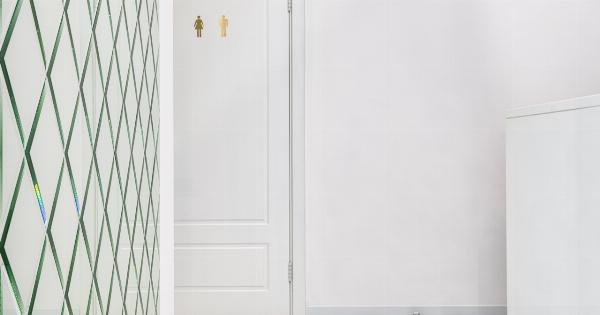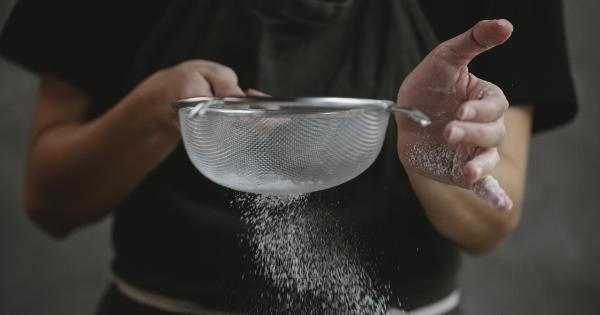Earwax, also known as cerumen, is a natural substance produced by the glands in our ear canals. It serves as a protective barrier against dirt, dust, and bacteria, preventing them from entering the inner ear.
However, excessive earwax build-up can cause discomfort, hearing problems, and even infections. In this article, we will discuss the best ways to remove earwax build-up safely and effectively.
1. Ear Irrigation
Ear irrigation, also known as ear flushing, is a common method used to remove excess earwax. It involves using a syringe or a specially designed irrigation kit to gently flush warm water into the ear canal and dislodge the earwax.
Here’s how to do it:.
- Fill a syringe or the irrigation kit with lukewarm water.
- Tilt your head sideways and gently pull your earlobe to straighten the ear canal.
- Slowly squirt water into the ear canal, aiming towards the roof of your ear canal. Be careful not to forcefully push the water.
- After a few seconds, tilt your head in the opposite direction to allow the water and dislodged earwax to drain out.
- Repeat the process if necessary, but be cautious not to overdo it, as excessive irrigation can lead to ear infections or damage to the eardrum.
2. Over-the-Counter Ear Drops
If you’re experiencing minimal earwax build-up, over-the-counter ear drops can be an effective solution. These drops contain oil or hydrogen peroxide, which softens the earwax, making it easier to come out naturally. Follow these steps:.
- Read the instructions on the ear drops carefully and warm the solution to body temperature by holding the bottle in your hands for a few minutes.
- Tilt your head sideways and gently pull your earlobe to straighten the ear canal.
- Administer the recommended number of drops into the ear canal.
- Keep your head tilted for a few minutes to allow the drops to penetrate the earwax.
- Tilt your head in the opposite direction to let the earwax and solution drain out.
- Use a clean cloth or tissue to wipe away any excess liquid.
3. Olive Oil
Olive oil is a natural remedy that can effectively soften earwax and facilitate its removal. It has lubricating properties that help soften and dislodge the wax. Here’s how to use olive oil:.
- Warm some extra-virgin olive oil but ensure it is not too hot.
- Gently tilt your head sideways and use a dropper to administer a few drops of warm olive oil into the affected ear canal.
- Keep your head tilted for about 10 minutes to allow the oil to penetrate the earwax.
- Afterward, tilt your head in the opposite direction to drain the earwax out.
- Use a clean cloth or tissue to wipe away any excess oil that may have dripped out.
4. Hydrogen Peroxide
Hydrogen peroxide is a common household remedy that can help break down earwax and clear the blockage. Here’s how to use it:.
- Obtain 3% hydrogen peroxide from a local pharmacy or drugstore.
- Using a dropper, put a few drops of hydrogen peroxide into the affected ear canal.
- Allow it to fizz and bubble for about 10 minutes.
- Tilt your head in the opposite direction to drain the loosened wax out.
- Gently rinse the ear with warm water to remove any remaining debris.
5. Earwax Removal Kit
If you prefer a more specialized approach, you can purchase an earwax removal kit, readily available at most pharmacies or online. These kits usually include ear drops, an earwax softener, and a bulb syringe or an ear irrigation system.
Follow the instructions provided with the kit for safe and effective earwax removal.
6. Seek Professional Help
If you are unable to remove the earwax build-up using at-home remedies or if you experience severe pain, hearing loss, or recurring ear infections, it is recommended to seek professional help.
An ear, nose, and throat (ENT) specialist or an audiologist can assist you in safely removing the earwax using specialized tools and techniques.
7. Prevention Tips
Preventing excessive earwax build-up can help avoid discomfort and potential complications. Here are a few tips to prevent earwax blockage:.
- Do not use cotton swabs or any other objects to clean your ears, as these can push the earwax deeper into the ear canal.
- If you use hearing aids, make sure to clean them regularly to prevent wax accumulation.
- Keep your ears dry by using a swim cap or earplugs when swimming or showering.
- Avoid excessive use of earphones or earbuds, as they can cause the earwax to compact.
- Regularly consult with your healthcare provider or audiologist for ear check-ups and cleanings.
In Conclusion
When dealing with earwax build-up, it is important to choose safe and effective methods for removal. While at-home remedies can be useful, it is crucial not to resort to aggressive measures that may cause damage or injury.
If you are unsure or experiencing any symptoms of earwax impaction, consult a healthcare professional for proper evaluation and treatment.





























